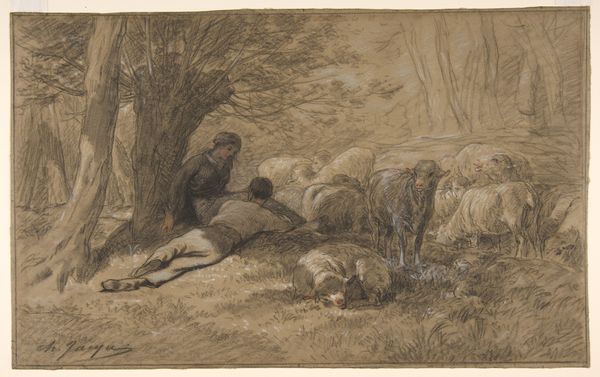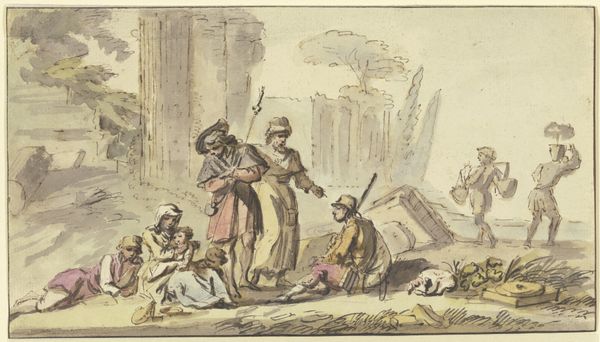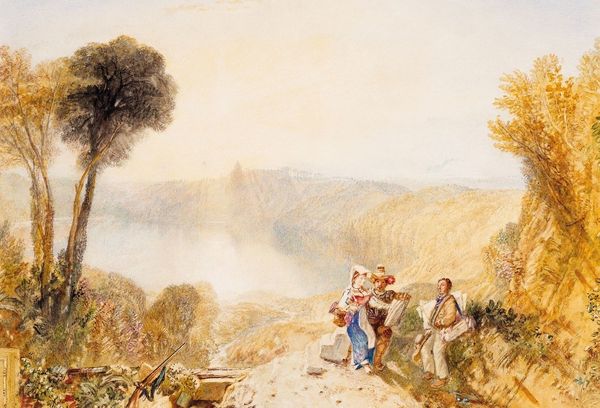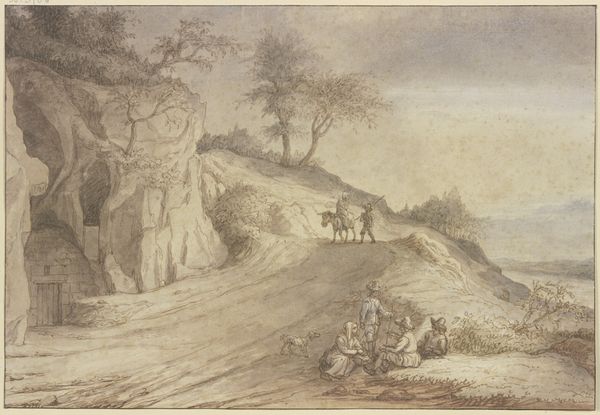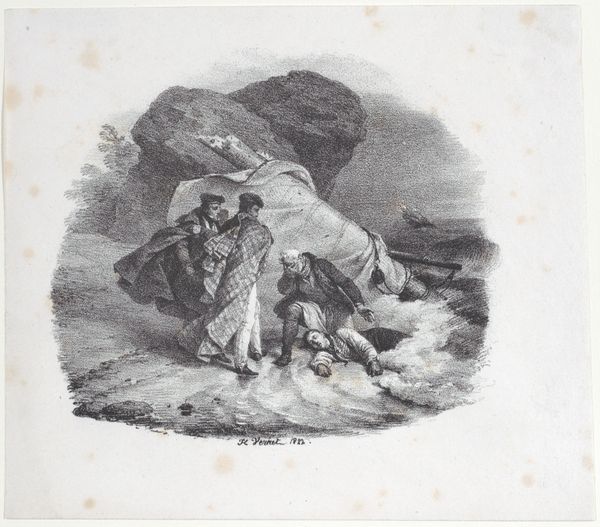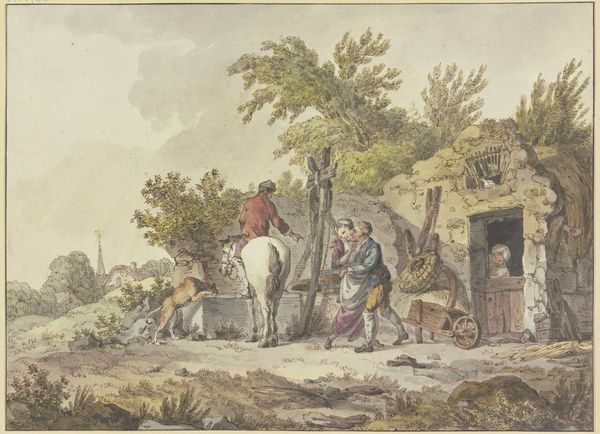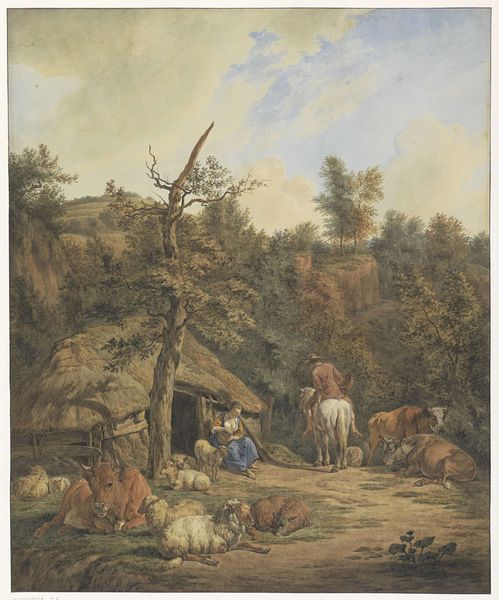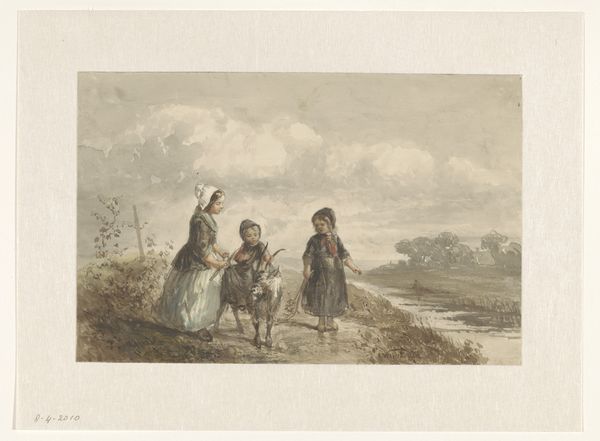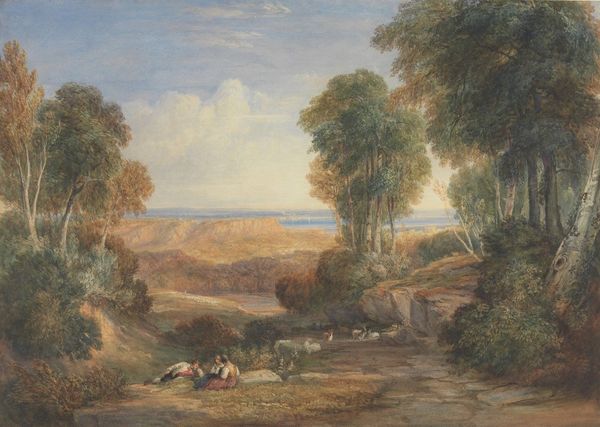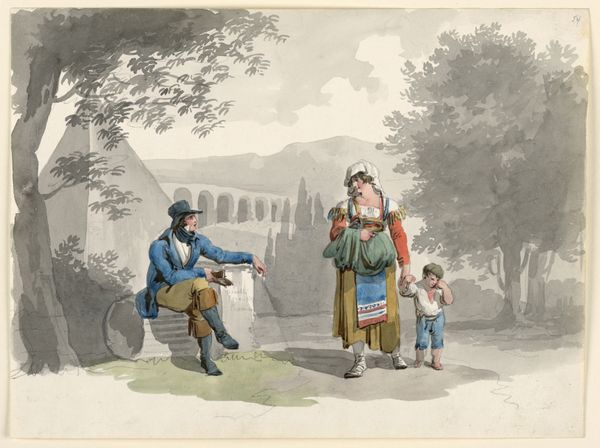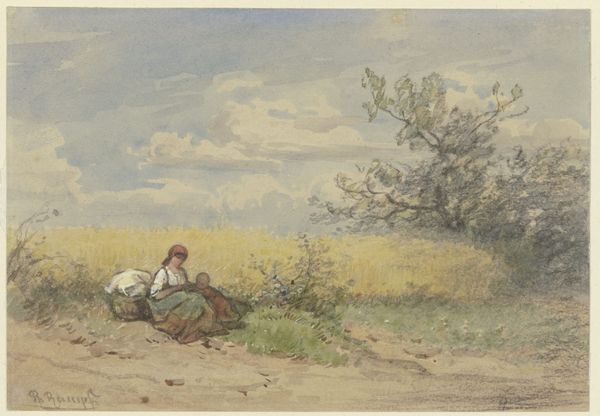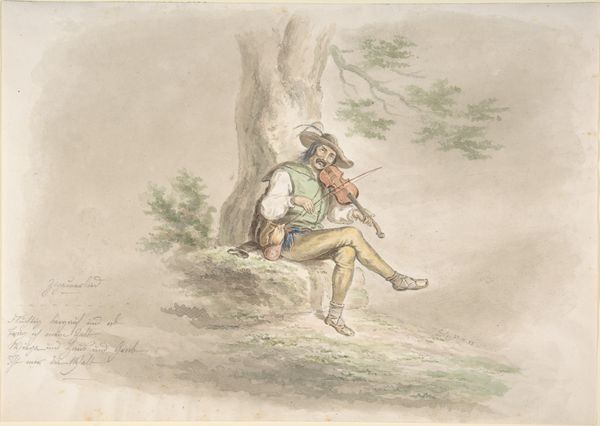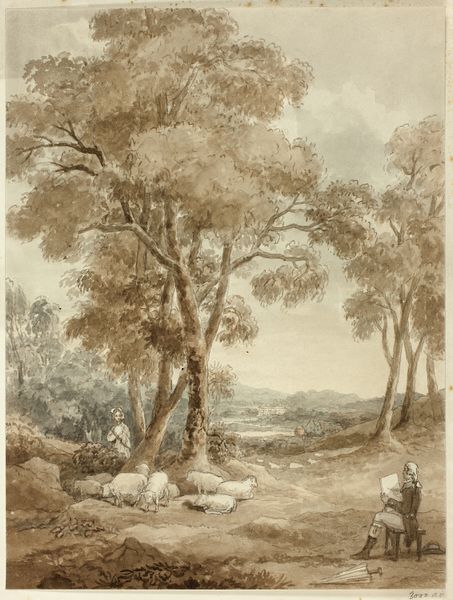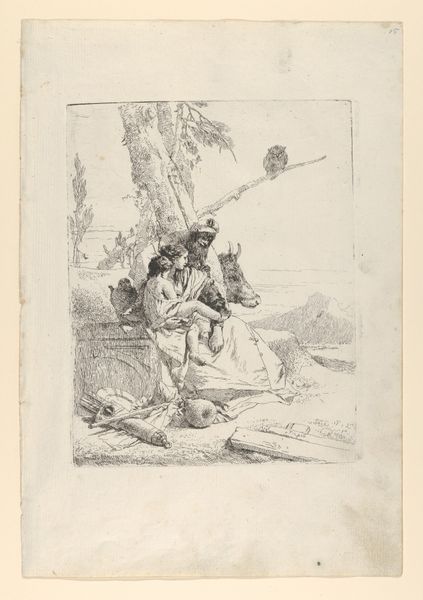
Blinde man met meisje, bedelend aan de kant van een landweg 1803 - 1861
0:00
0:00
watercolor
#
gouache
#
narrative-art
#
landscape
#
figuration
#
watercolor
#
coloured pencil
#
romanticism
#
genre-painting
#
mixed media
#
watercolor
Dimensions: height 222 mm, width 265 mm
Copyright: Rijks Museum: Open Domain
Editor: This watercolor and gouache piece, "Blinde man met meisje, bedelend aan de kant van een landweg"—or "Blind Man with Girl, Begging by the Side of a Country Road"— is by Jacob Joseph Eeckhout and is dated sometime between 1803 and 1861. It evokes a palpable sense of melancholic quiet, even as it depicts figures in motion in the background. What social narratives do you read in this piece? Curator: This work speaks volumes about the social landscape of the time. Eeckhout's choice to depict poverty, specifically the vulnerability of a blind man and a young girl, engages with the romanticized, yet often harsh, realities of 19th-century life. Notice how the figures are positioned by the roadside, literally and figuratively at the margins of society. The passing figures on horseback further emphasize this divide, hinting at the societal indifference towards the impoverished. What do you think the artist is trying to communicate about the role of art in portraying social issues? Editor: That makes me think about how art can give a voice to the voiceless. Was this a common theme in art from this period? Curator: Yes, increasingly so. With the rise of industrialization and urbanization, there was a growing awareness of social disparities. Artists began to use their work as a form of social commentary, prompting viewers to confront uncomfortable truths about poverty and inequality. This painting, for example, not only documents the plight of the marginalized but also implicitly critiques the social structures that perpetuate their suffering. The museumification of such art then serves its own social function. How might contemporary audiences interpret this artwork differently, given our own social and political contexts? Editor: It makes me consider the role institutions play in shaping the story we tell about this piece. I learned so much about how art portrays societal issues here! Curator: Likewise! Considering how historical and social forces influence both the creation and reception of art deepens our appreciation.
Comments
No comments
Be the first to comment and join the conversation on the ultimate creative platform.
